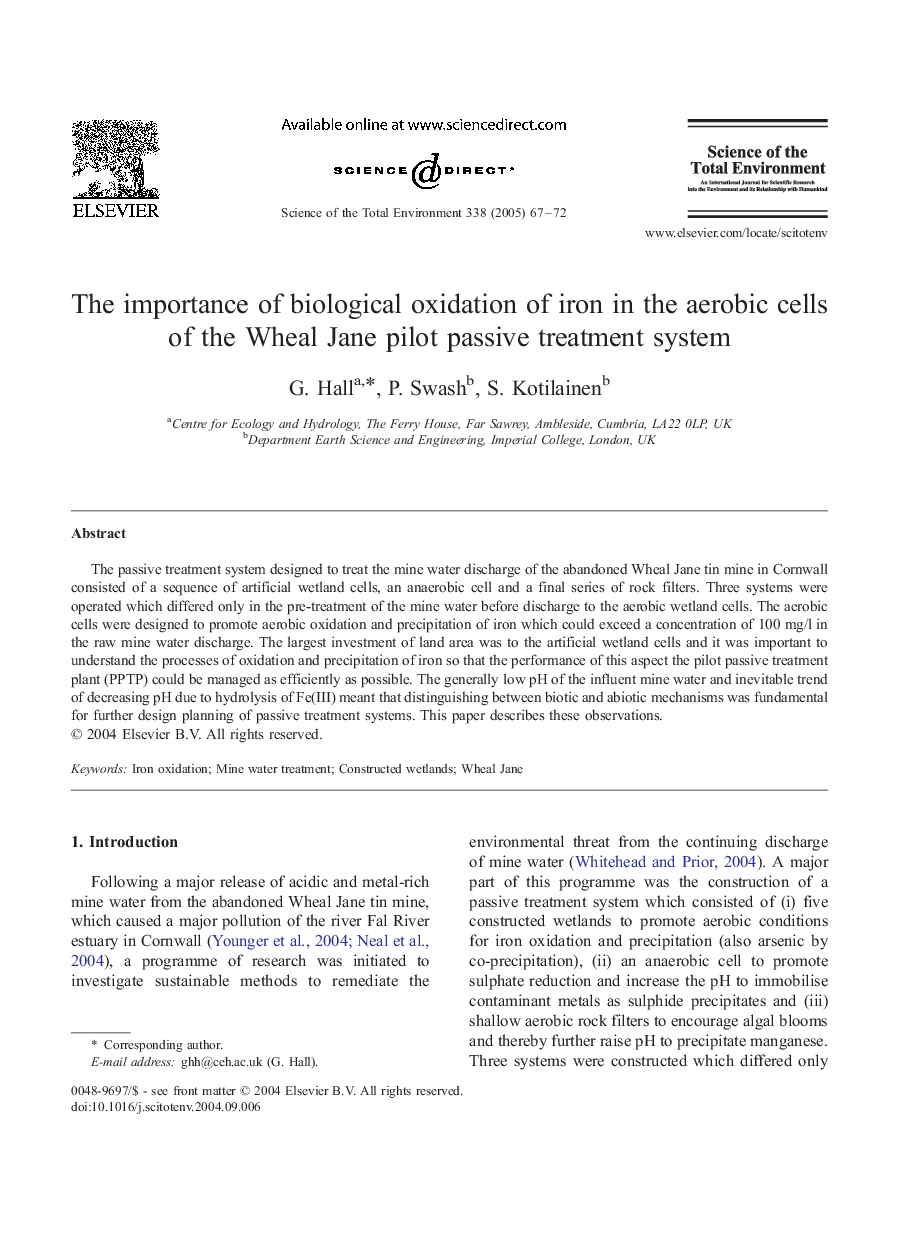| Article ID | Journal | Published Year | Pages | File Type |
|---|---|---|---|---|
| 10110985 | Science of The Total Environment | 2005 | 6 Pages |
Abstract
The passive treatment system designed to treat the mine water discharge of the abandoned Wheal Jane tin mine in Cornwall consisted of a sequence of artificial wetland cells, an anaerobic cell and a final series of rock filters. Three systems were operated which differed only in the pre-treatment of the mine water before discharge to the aerobic wetland cells. The aerobic cells were designed to promote aerobic oxidation and precipitation of iron which could exceed a concentration of 100 mg/l in the raw mine water discharge. The largest investment of land area was to the artificial wetland cells and it was important to understand the processes of oxidation and precipitation of iron so that the performance of this aspect the pilot passive treatment plant (PPTP) could be managed as efficiently as possible. The generally low pH of the influent mine water and inevitable trend of decreasing pH due to hydrolysis of Fe(III) meant that distinguishing between biotic and abiotic mechanisms was fundamental for further design planning of passive treatment systems. This paper describes these observations.
Related Topics
Life Sciences
Environmental Science
Environmental Chemistry
Authors
G. Hall, P. Swash, S. Kotilainen,
